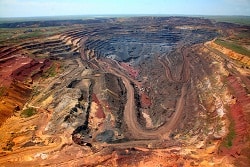The Mining Resource Rent Tax
Written by Alex Milne, Solicitor at Lovegrove Solicitors
23 March 2012

The Mining Resource Rent Tax, commonly known as the ‘mining tax’ was passed by the Upper House this week, seemingly crossing the final hurdle which had stood in front of it. However immediately upon having crossed the finish line, calls for its disqualification were brewing. Critics within some mining companies as well as within the West Australian government have mooted a Constitutional challenge to the validity of the Act.
For a start, it has generally been accepted in Australia (at least up until now) that the States have the power to legislate in regard to minerals within their territory. Obviously enough of the States have been exercising this power through charging royalties on mined minerals, and will continue to do so.
Under section 114 of the Constitution, the Commonwealth government cannot put a tax on the property of a State. Therefore by extension it has been argued that the Commonwealth does not have the power to put a tax on a mineral resource. This would seemingly leave the Commonwealth powerless to impose the ‘mining tax’.
However the tax cleverly seeks to avoid this hurdle by focusing its aim on taxing the ‘super-profits of mining companies’. Essentially there will be a 30% tax on all profits above $75 million made by a mining company at the ‘valuation point’. Where the actual profits are realised further down the production line, the mining company will need to estimate how much of these profits are due to the raw materials as they stood at the valuation point, rather than due to value adding work later in the production line.
The valuation point is for the purposes of the tax is the point after the minerals have been extracted from the ground, but before any ‘value adding’ processes have been performed. This is the official line so we will leave to one side the fact that the digging up of the dirt adds value to it exponentially. The tax is not focusing on the mineral resource itself, rather on the company and its profits. The critics note that at the valuation point it is still a raw material which has just been pulled out of the ground, up until which point it would be the property of the State Crown.
It is not difficult to see how the argument could be run on the lines that the tax is effectively a tax on a mineral resource despite the fact that it purports not to be. The fact that the explanatory memorandum to the Act of Parliament which implement the tax specifically takes the time to stress that it is not in breach of section 114 certainly rings alarm bells for many.
The mining tax could have the effect of diminishing the full power of the States to tax for the extraction of minerals and placing a power the hands of the Commonwealth. Although the States still have the power to charge royalties no doubt they would still see their powers is being diminished. There is also the issue that some States (particularly Western Australia) see themselves as being discriminated against, as the tax will burden them to a much greater extent.
This argument relies on section 51 of the Constitution which states that the Commonwealth must not impose a tax which discriminates between States. Whilst the legislation on its face does not purport to discriminate between the states, it doesn’t take much imagination to see how in practice the effect will be felt very differently by the different states.
The crucial question of whether the mining tax will survive may come down to whether the High Court is satisfied by the fact that the form of the bill appears to be compliant with the constitution or whether the bench wish to go further and look at whether the substantive effect of the Acts are compliant with the Constitution.
The legislation itself is at pains to stress how it is legally compliant with the constitution. It uses a variety of technical and legalistic arguments to reaffirm that it is not taxing actual minerals, and is not discriminating between States. However the substantive effects do seem to amount to a taxation of minerals and discrimination between states. The High Court will be under pressure to delve into these substantive effects, as well as under pressure not to be seen as further diminishing State powers.
The issues of diminishing State powers is a thorny one for the High Court, which has been accused of too often allowing such diminishment. Will the mining States form some sort of confederacy and march on Canberra together? Almost certainly not, but it will nevertheless cause a degree of disquiet.
What is clear is that the Constitutional validity of the tax is not a given, and the result cannot be easily predicted. We may still be literally years away from knowing whether the tax can get over the finish line, or whether it will fall at this final hurdle.